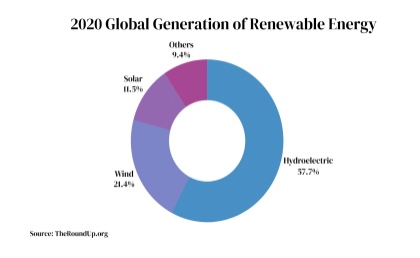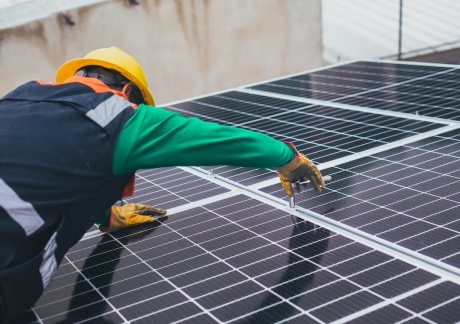Renewable energy is gaining popularity as it addresses the growing energy demand.. At the same time, it must be done in an environmentally friendly manner. Thus, the use of solar power, wind turbines, and hydroelectric power plants for energy generation is on the rise.
For small business owners, going solar can result in significant cost savings. There are also environmental benefits and energy independence. This article examines the tangible impact of solar solutions. It also offers actionable insights for small businesses looking to invest in clean energy.
Table of Contents
Cost Reduction Through Solar Energy Adoption
Converting even a portion of your operation to solar power can significantly reduce electricity bills. The assessment is according to the Solar Energy Industry Association (SEIA). Small businesses can pocket $10,000 to $30,000 in savings over 20 years. Additionally, the installation of solar panels can yield a return on investment (ROI) of over 20%.
The switch to solar arguably results in significant cost savings. It’s not surprising that over 90% of small businesses that adopt clean energy solutions have their expectations met or exceeded.
Environmentally Friendly Energy

Besides saving money, solar power enables small businesses to operate sustainably. These figures are provided by the National Renewable Energy Laboratory (NREL). Solar power can reduce U.S. greenhouse gas emissions to 100 million metric tons per year by 2050. To put that in perspective, a small 30-kilowatt solar project offsets carbon emissions equivalent to planting 1,400 trees.
Adopting solar power allows your small business to use clean energy. At the same time, you also support important environmental goals.
Reliable Energy Independence
In addition to its environmental benefits, solar frees small businesses from unpredictable utility costs. In the first 10 years, solar units have been more than 90% reliable. Combining solar systems with advances in battery storage technology, it can deliver clean energy around the clock.
This energy independence and robustness make operating costs easier to manage. So if utility bills eventually rise, your business can rely on consistent solar power.
Save with Incentives
Now, let’s explore the fiscal incentives and discounts offered by federal and state governments. These are known to sweeten the deal to convert to solar energy, known as a reap grant. The Federal Solar Investment Tax Credit (ITC) provides this incentive. Small businesses are allowed to deduct 26% of installation costs from federal taxes by 2023.
In addition, other state-level incentives, such as rebates, can cover more than 30% of upfront costs and have been done about it. However, please keep in mind that it applies only to specific regions.
Understanding these motivations makes achieving ROI goals more attainable, especially for small business owners.
Solar Feasibility Study
There are many factors to consider before deciding to adopt solar technology. Small businesses must determine whether the move makes sense logistically and financially. Let’s examine both sides of this solar analysis.
Finding the perfect place
A comprehensive site analysis can improve solar energy efficiency by up to 25%, according to EnergySage. Check potential solar areas on your property for any obstructions. Nearby trees or buildings may block sunlight. According to Energy.gov, shading can reduce solar panel performance by 10-50%.
Be sure to investigate potential solar installation locations to maximize the ROI of energy production.
Crunching the numbers
The following variables should also be examined to calculate the ROI timeline that works for your small business:
- Costs upfront
- Expenditure on electricity
- Solar generators
- Promotions and incentives
- Financing options
The Solar Energy Industry Association (SEIA) looks at commercial solar solutions that typically achieve an ROI in 3 to 7 years. Furthermore, economic options make solar technology feasible. It can be done with little upfront investment. Financing options discussed include solar leases, power purchase agreements (PPAs), and solar loans.
Check all variables to find the best solar deal. It should be tailored to the budget of your small business.
Exploring the Ideal Solar Power System
Once you’re satisfied with the location’s value and financial analysis, it’s time to set up the solar system for your property. The average active solar panel is 10-20 watts per square foot. EnergySage recommends sizing your system based on your business’ energy usage.
Rooftop solar draws the most attention. But you can also consider ground-mounted or tree-mounted systems, depending on your property. Maximizing solar coverage is the key to a positive ROI.
Installation and Maintenance
According to EnergySage, installing a customized solar system for your small business typically takes 3 to 5 days.Optimize your solar investment for the 25+ year lifespan of most panels. By doing so, expect to spend $100 to $1,000 annually on maintenance like panel cleaning and equipment inspections.
While essential, these costs pale in comparison to the long-term savings solar delivers.
Solar Success Stories
Still unsure about going solar? These real-world examples showcase what properly implemented solar technology can do.
A bakery in California reduced electricity bills by 90% by switching to solar energy. The 30 kW system provides enough clean energy for both baking and lighting equipment.
Additionally, a small manufacturer in Texas achieved cost savings of over 20%. It happened when they installed their solar panels. This helped spread the gains while supporting energy independence.
These small businesses have unlocked huge benefits from using solar energy. It can be yours too!
Answer the Solar Energy Q&A
Let’s close by answering some of the most common questions small business owners ask about solar energy.
What is the typical ROI period for a solar system?
Between 5 and 7 years for small businesses, depending on site details and financing options.
When will I need to replace my solar panels?
Solar panels that are properly maintained can operate efficiently for 25+ years before requiring replacement.
What solar financing options exist for small businesses?
Leases, PPAs, solar loans, and more make the upfront costs of solar technology easily manageable for small business owners.
Harness the Sun to Power Your Business
As we’ve explored, solar energy delivers small businesses like yours tangible benefits. Solar technology empowers growth unrestricted by utility providers. These benefits range from significant cost savings and reliability to energy independence and sustainability.
Utilize solar incentives and financing solutions to benefit from clean energy for decades. Now is the time for small businesses to invest in a bright solar future!
